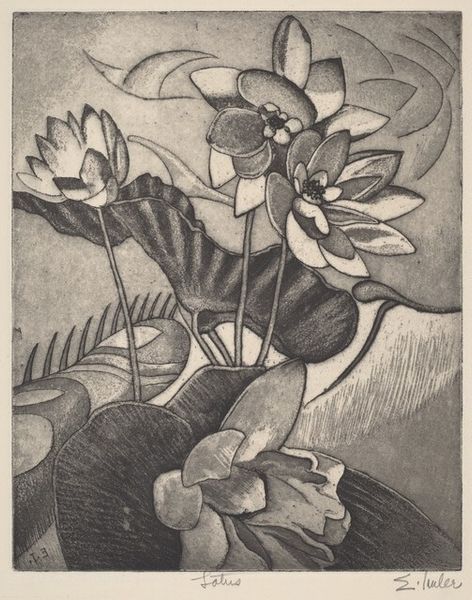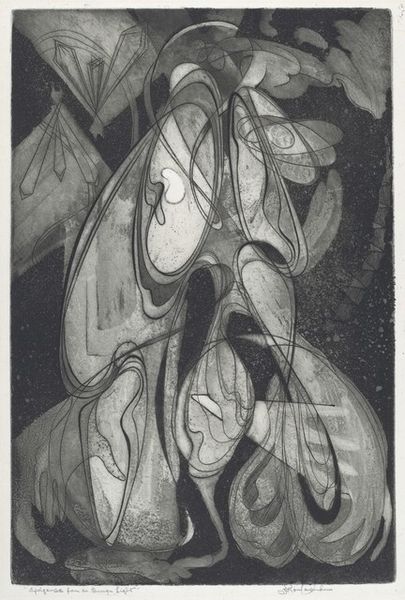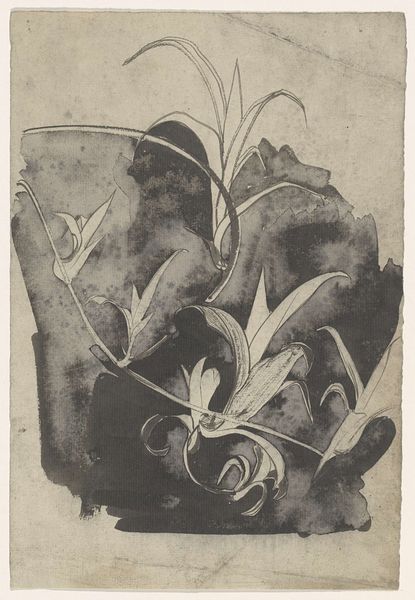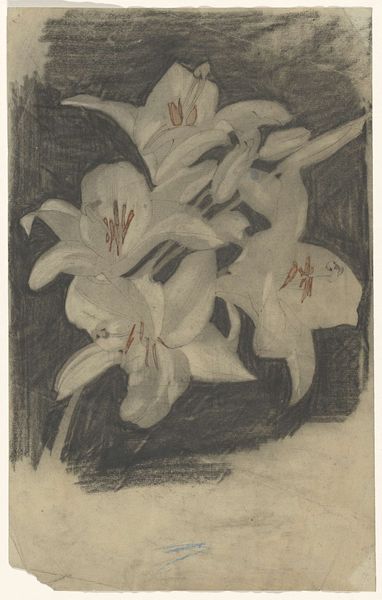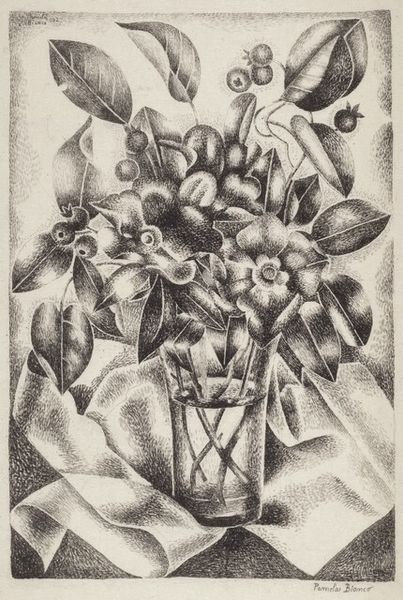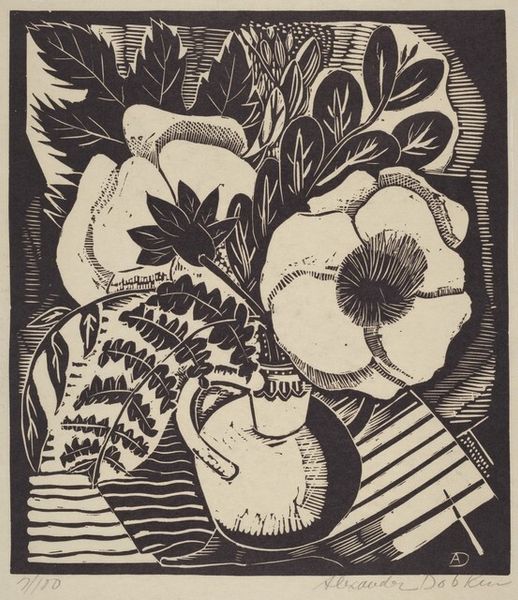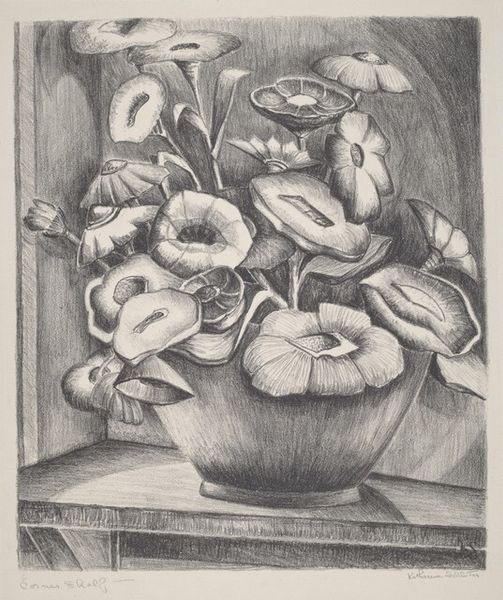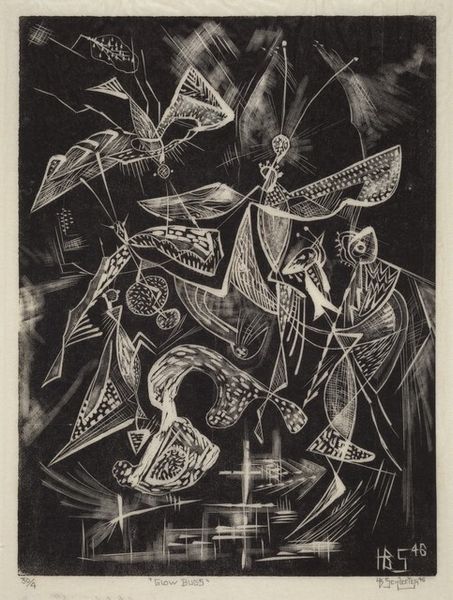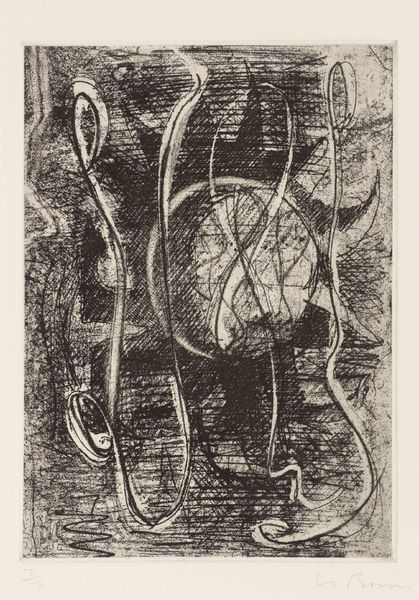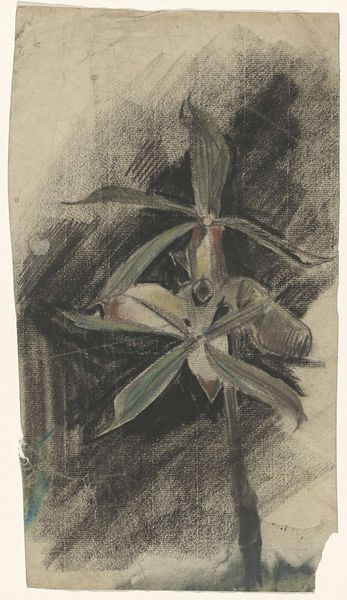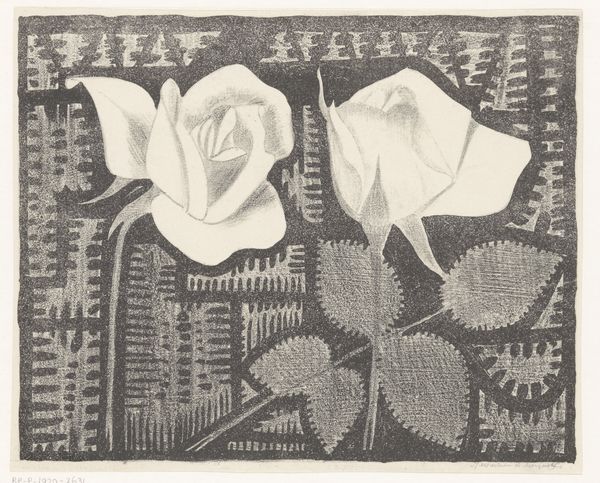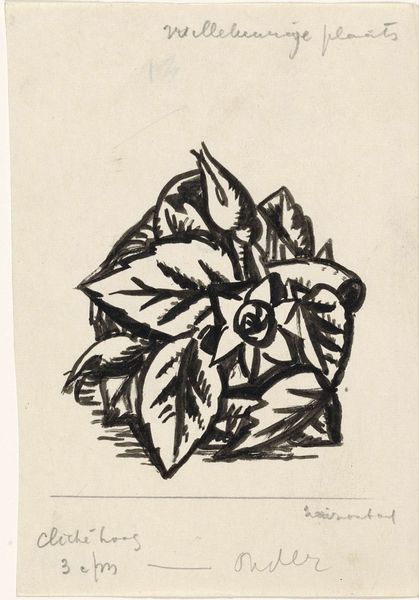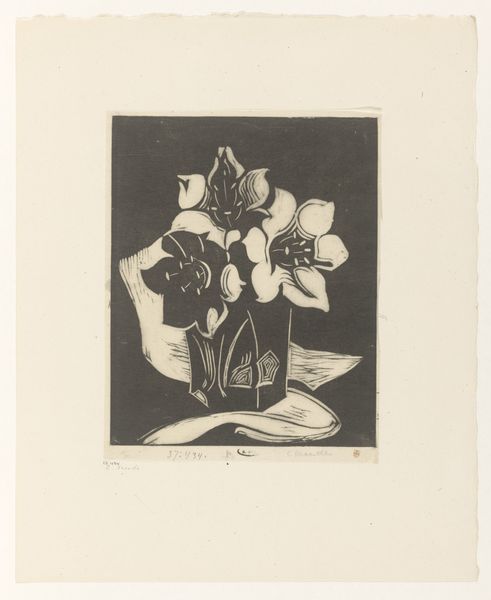
print, woodcut
# print
#
geometric
#
woodcut
#
modernism
Dimensions: block: 218 x 178 mm sheet: 253 x 210 mm
Copyright: National Gallery of Art: CC0 1.0
Editor: Here we have Katharine Schlater's "Lily" from around 1930, a modernist woodcut print. I'm really struck by the bold contrast of the black and white, it gives the floral arrangement a very stark and almost graphic quality. What stands out to you in this piece? Curator: What resonates for me is the tension between the seemingly straightforward subject matter - flowers in a vase - and the radical formal language Schlater employs. How does this aesthetic choice speak to the social and political upheavals of the interwar period, with its crisis of representation? It moves away from romanticizing nature toward a more intellectual understanding of reality. Editor: So, you are saying this work, and modernist art in general, sort of reflected that broader sense of change or unease after the first World War? Curator: Precisely. The very act of abstracting a commonplace object like a flower implies a kind of critique of established power structures and ideals. It reflects a yearning to find new forms to express new realities, including gender identity and expression. Think of Georgia O'Keeffe or even Frida Kahlo, for example. Are there feminist implications here, as well? Editor: I hadn't thought about it that way, but I do see how her simplified style speaks to modern social change. Did that style perhaps also open the artwork to wider audiences? Curator: It's important to ask if it made it accessible to all or if that's only an illusion of inclusivity. Who truly had access to and was validated by such a space in society? Editor: Good question. It sounds like there are different interpretations depending on where the viewer is coming from, even today. Curator: Precisely, and that is one of the beauties of engaging with works like this. Editor: Thank you for highlighting these different points to look for, and to consider from what lens we interpret them. Curator: It has been insightful to reconsider this work together, thinking about both the artist and her context, and also the work itself.
Comments
No comments
Be the first to comment and join the conversation on the ultimate creative platform.
